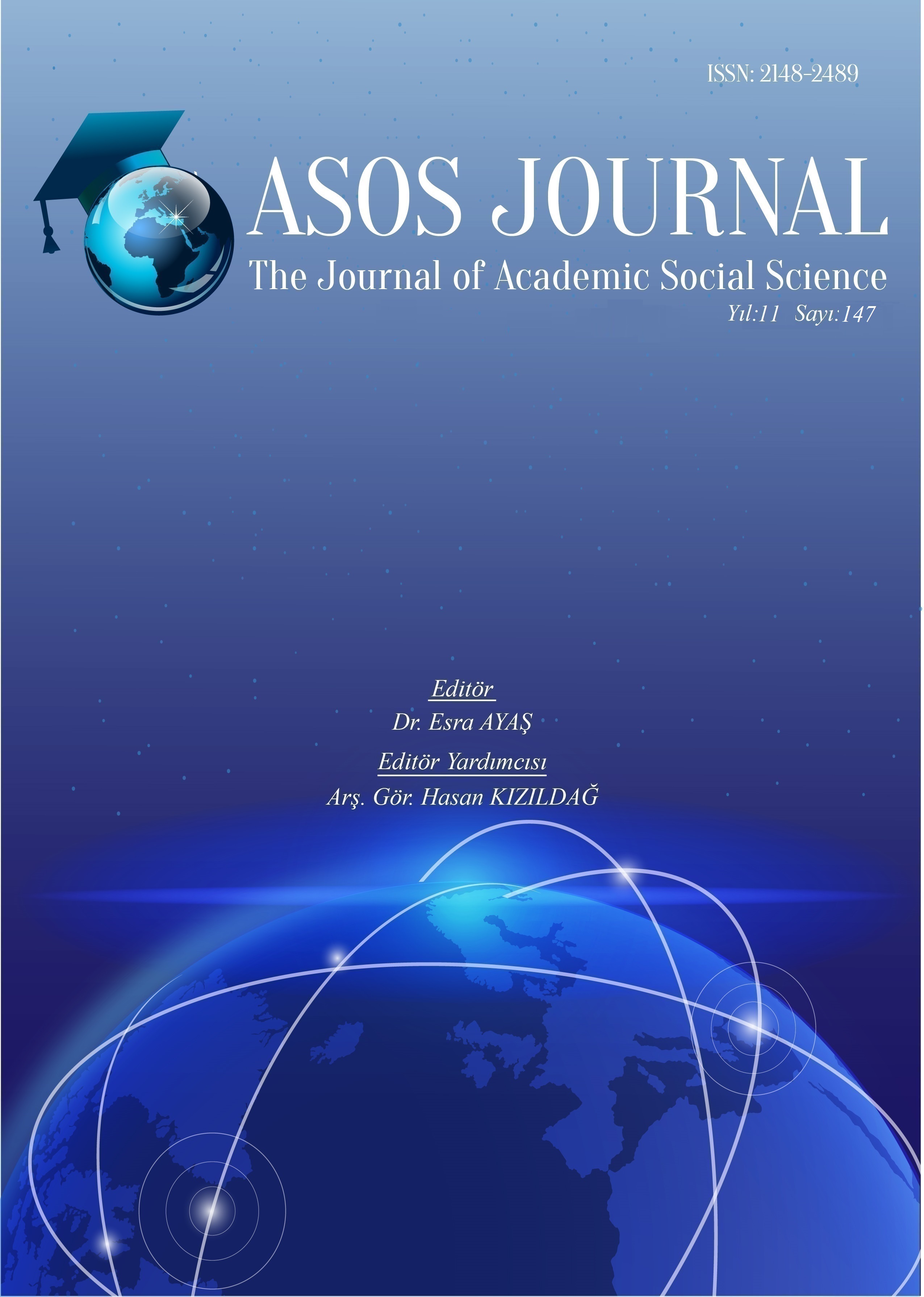Author :
Abstract
Sanatta hazır nesnelerin işlevleri dışında kullanımına olanak sağlayan bir uygulama olarak asamblaj, sanat eğitimi sürecinde öğrencilerin düşüncelerini üç boyutlu yansıtabilmelerine de olanak tanımaktadır. 20. yüzyılda sanatın algısı ve üretim biçimleri değişmiş ve günümüze değin sınırsız bir çeşitlilik göstererek ulaşmıştır. Sanatçılar, düşüncelerini en iyi yansıtabilecek materyalleri seçip görsele dönüştürmektedirler. Bu süreçte geleneksel yöntemlerden boya, kil, tuval gibi malzemeler sanatın yansıtma biçimleri olarak karşımıza çıkarken bu unsurların dışında atık malzemeler, doğanın kendisi, her türlü malzeme sanatın anlatım dilinde yerini bulmaktadır. Çalışmada Covid-19 pandemi döneminde temel tasarım dersinde öğrencilerin asamblaj uygulamaları değerlendirilmektedir. 2020-2021 eğitim-öğretim döneminde uzaktan eğitim sürecinde öğrenciler evde kaldıkları zamana yönelik duygu ve düşüncelerini asamblaj çalışmaları aktararak görsele dönüştürmüşlerdir. Çalışma, öncelikle asamblajın ne olduğu ve sanatta biçim buluşuna odaklanmaktadır. Ardından öğrencilerin uygulamaları üzerinden uzaktan eğitim sürecinde üç boyutlu sanat çalışmalarının çıktılarına yönelik bireysel yorumlarına yer verilmiştir. Bu araştırmanın amacı, pandemi döneminde uzaktan eğitimde güzel sanatlar fakültesi öğrencilerinin üç boyutlu çalışma yapabilmelerine olanak tanınan proje uygulamalarını tasarım odaklı değerlendirmek ve uygulama ile duygu ve düşüncelerini yansıtan öğrencilerin uzaktan eğitim sürecindeki olumlu/olumsuz tavırlarını ortaya koymaktır. Araştırmanın sonucunda öğrencilerin evlerindeki farklı materyalleri kullanarak yeni bir bütüne ulaşabildikleri, uygulamanın onların duygu ve düşüncelerini yansıtabildikleri ve uzaktan eğitim sürecinde keyif alarak çalıştıkları bir sürecin yaşandığı anlaşılmaktadır.
Keywords
Abstract
An application that allows the use of ready-made objects in art beyond their functions. Assemblage is a three-dimensional way of expressing students' thoughts during the areducation process. It also allows them to reflect. Perception and production styles of art in the 20th century It has changed and has reached today, showing unlimited diversity. Artists,They choose the materials that best reflect their thoughts and turn them into visuals. In this process Materials such as paint, clay and canvas from traditional methods are used as forms of reflection of art. Apart from these elements, we encounter waste materials, nature itself, all kinds of materials. It finds its place in the expression language of art. In the study, basic data were collected during the Covid-19 pandemic period. Students' assemblage applications are evaluated in the design course. 2020-2021 education Students' feelings about the time they stayed at home during distance education during the academic year and they transformed their thoughts into visuals by conveying them through assemblage works. The study is primarily It focuses on what assemblage is and the invention of form in art. Then the students The output of three-dimensional art works in the distance education process through applications Individual comments regarding the issue are included. The aim of this research is to Students of the faculty of fine arts can make three-dimensional works in distance education. To evaluate the project applications that are possible with a design focus and to evaluate the emotions and feelings with the application. Positive/negative attitudes of students reflecting their thoughts in the distance education process is to reveal. As a result of the research, students use different materials in their homes. They can reach a new whole by using They experienced a process in which they could reflect and enjoy working during the distance education process. It is understood.





